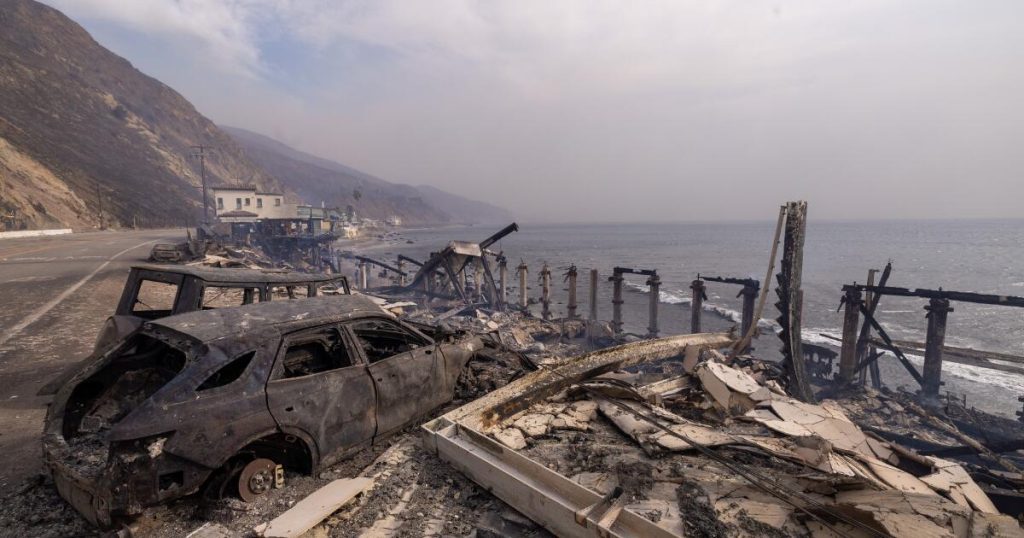
The devastating wildfires that hit Southern California occurred after a sudden change in weather from wet to extremely dry. Scientists describe this phenomenon as “hydroclimatic whiplash.”
These sudden wet-to-dry and dry-to-wet fluctuations, which can worsen wildfires, floods and other disasters, are becoming more frequent and intense due to human-induced climate change, according to a new study. It is shown that
“Southern California is currently experiencing whiplash from wet to dry conditions,” said Daniel Swain, a climate scientist at the University of California, Los Angeles, who led the study. “Evidence shows that hydroclimatic whiplash injuries are already increasing due to global warming, and further warming will lead to even larger increases.”
The extreme weather changes over the past two years in Southern California are among such dramatic changes that scientists have recorded around the world in recent years.
An unusually wet winter in 2023 and 2024 encouraged the growth of brush and grass in the area’s hillsides, but this was followed by a period of very warm, dry weather in the spring, which caused a decline in vegetation across Los Angeles. has become dry.
Since October, much of Southern California has experienced record-dry conditions. Swain said this whiplash of extreme weather has increased the risk of extreme wildfires of the kind that exploded in strong winds this week.
“This continuation of the whiplash in California has increased the fire danger two-fold. One is that the growth of flammable grass and brush has increased significantly in the months leading up to fire season. , and that it has dried to a very high level,” Swain said.
“Climate change is already making Southern California’s fire season hotter and drier, and it is increasingly extending it into the winter,” he said. “This is particularly problematic as strong offshore winds are common in this region in late fall and winter. When these strong winds are combined with extremely dry vegetation conditions, as they are now, they can lead to extremely dangerous wildfires. may occur.”
As temperatures rise due to the burning of fossil fuels and rising levels of greenhouse gases, Swain and other scientists predict that extreme weather fluctuations will continue to become more frequent and erratic, with precipitation occurring over shorter periods of time. It is predicted that the weather will be concentrated in the area, with more severe droughts interspersed.
In a study published Thursday in the journal Nature Reviews Earth & Environment, researchers examined global weather records and found that hydroclimate whiplash events have already increased by 31% to 66% since the mid-1900s. and found that the scenario is likely to more than double. At that time, the world will reach a warming of 3 degrees Celsius, or 5.4 degrees Fahrenheit.
Researchers say human-caused climate change is responsible for this increase, which occurs because the atmosphere is able to absorb and release more water as it warms. He said that Swain and his colleagues likened this effect to an expanding “atmospheric sponge” that can absorb more water and cause more intense floods and droughts.
“The problem is that the sponge grows exponentially, like compound interest in banks,” Swain says. “With every little bit of warming, the rate of expansion increases.”
Swain and his eight co-authors said these more intense shakings increase the risk of dangerous wildfires, flash floods, landslides and disease outbreaks.
Vineyards in the San Joaquin Valley are under floodwaters after a series of historic storms.
(Robert Gauthier/Los Angeles Times)
California naturally experiences some of the most dramatic changes in the world between very wet and very dry weather. And as the world warms further, scientists predict these fluctuations will become even more extreme.
The scientist also mentioned another recent case of whiplash in California. On the heels of a severe drought from 2020 to 2022, the state experienced a series of major atmospheric river storms in 2023 that dumped heavy rain and historic amounts of snow, causing flooding and landslides.
Scientists pointed to, among other examples, heavy rains and flooding in East Africa in 2023 following a prolonged drought that destroyed crops and displaced people.
“A hydroclimate-induced increase in whiplash injuries may prove to be one of the more universal global changes in a warming planet,” Swain said.
Other studies show that climate change is a major factor in worsening droughts in the western United States, that wildfires are occurring more frequently, and that global warming is increasing the risk of an explosion in wildfires. It turns out that.
Researchers say adapting to these more extreme conditions in places like California will require changes in water management practices and infrastructure to plan for both droughts and floods, rather than treating them as separate hazards. said. One approach, they say, is to restore natural floodplains to absorb high flows from severe storms, reducing the risk of flooding while recharging groundwater.
Because increasing climate change is associated with a variety of interconnected hazards, scientists are calling for “disaster management, emergency preparedness, and Infrastructure design is urgently needed.”
The findings also highlight the importance of efforts to limit global warming, Swain said. “The less it warms, the less hydroclimatic whiplash will increase.”
Source link




